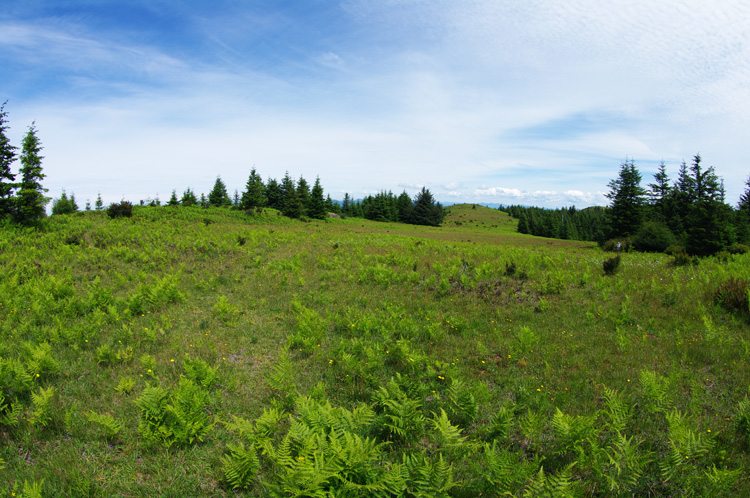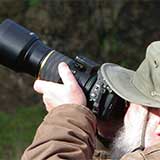Tillamook Coast Life Blog
Wildflowers and butterflies of Mt. Hebo
Mt. Hebo is the highest point in southern Tillamook County, reaching to over 3150 feet elevation, and one of the three or four highest points in Tillamook County. It is mostly covered with young and maturing coniferous forest, but has some superb meadow habitat on its summits, as well as a very interesting fen wetland.
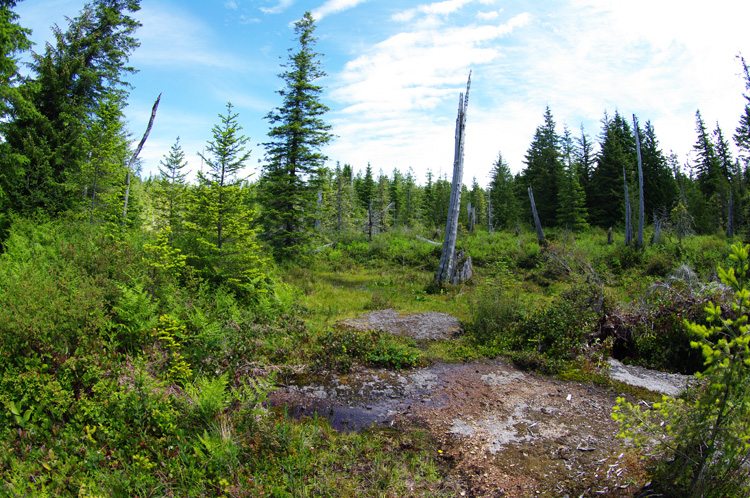
Mt. Hebo is best reached from the town of Hebo, on Hwy 101 19 miles south of Tillamook. Turn SE onto Hwy 22 for about two tenths of a mile and then turn east onto Mt. Hebo Road (marked with a brown sign indicating Hebo Lake and Mt. Hebo). This is a narrow and winding but paved Forest Service road that climbs 8 miles to the summit. The mountain actually has two summits of about the same elevation, connected by a narrow ridge, and both reached by the road.
The first (southwest) summit is the site of a World War II observation, radar, and communications base, most of which has been removed. A few fenced antennas and small buildings remain. The flat open areas to the west are the cleared base site, and are slowly returning to natural meadow conditions. On a clear day Pacific City, Haystack Rock, Cape Kiwanda and the ocean are clearly visible from here.
Summit meadows: treeless but diverse
The more interesting habitats are over toward the second, northeastern summit. Just as the antennas of the base come into view, the pavement ends and the road forks. The left fork goes up to the antennas and site of the base, while the right fork goes down into a dip, and climbs back to the main meadows and northeast summit. After about a mile the largest meadow opens on the left. Walk across it to the north to see a view all the way to Tillamook and Tillamook Bay.
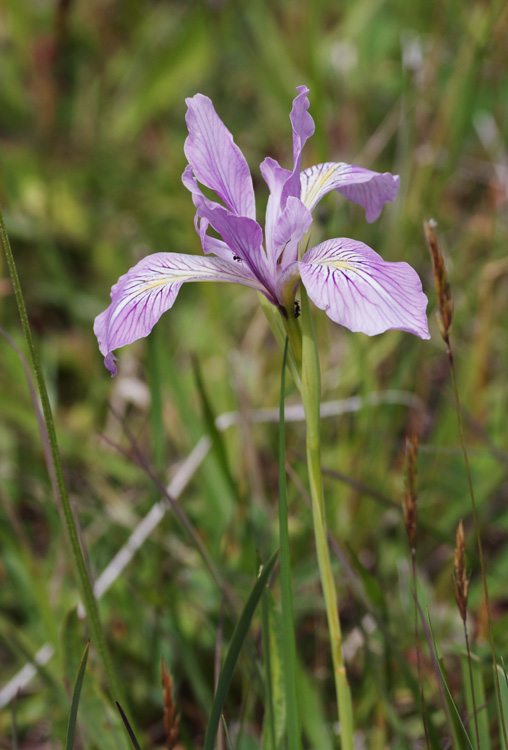
These summit meadows occupy areas where the soil is so thin that trees have difficulty growing, and surviving the fierce winter winds. Without the trees, they can support a diverse community if wildflowers and shrubs. This community has a lot in common with mid-elevation communities in the Cascades, 100 miles to the east. Shrubs such as Sitka Mountain Ash, Dwarf Cornel, and wildflowers like Arctic Lupine and Cardwell’s Penstemon are mixed with more widespread coastal plants, including Oregon Iris, Red Columbine, Columbia Lily, White Bead Lily, Nootka Rose, and Wild Strawberries.
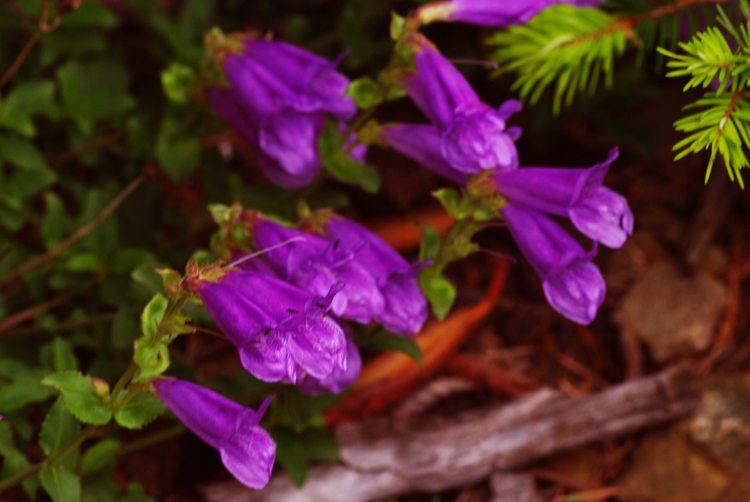
Ice age still has an impact
The “Cascades” element here is really a relic of the ice ages. When Puget Sound and points north were under a major ice sheet and the Cascade peaks had much more extensive montane glaciers, these plants were widespread in the coast range and probably on the coast as well. When the montane glaciers retreated and the continental ice sheets disappeared, these plants also retreated uphill, and now persist on only the higher peaks in the Coast Range. The most special of these plants on Mt. Hebo is the Elegant Fawn Lily, but its blooming season passed in May, so I will not discuss it further here, although I may write about it next spring. On these higher peaks, the blooming season is compressed: plants that bloom in April at sea level may still be blooming here in June, mixed with species that are summer-blooming at all elevations.
Butterflies are free to fly
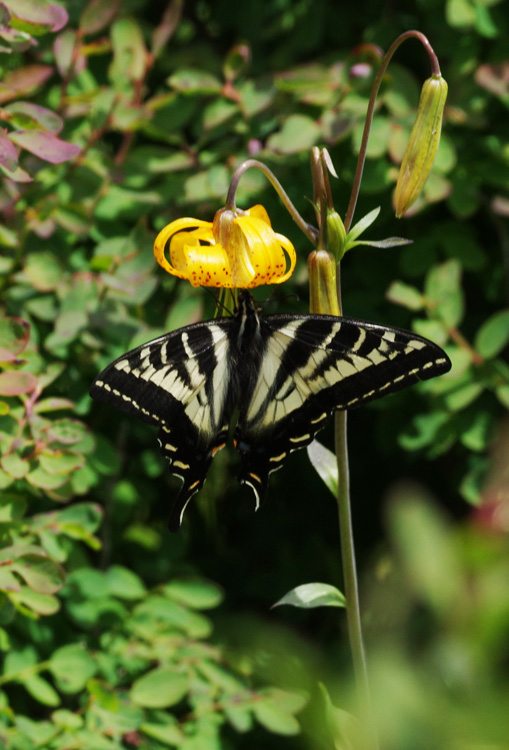
These meadows also are good habitat for butterflies. On my recent visit in late June, Western Tiger Swallowtails, Pale Tiger Swallowtails, Clodius Parnassians, and a small Fritillary were flying. Later in the summer the endangered Oregon Silver-spotted Fritillaries will be flying. This is one of the rarest butterflies in Oregon with one population on Mt. Hebo, and half a dozen scattered along the coast from Cascade Head to near Heceta Head. They are of course protected, so come to enjoy them with a camera, not a net! The new and inexpensive super-zoom cameras are great for photographing butterflies.
Other species will also use the meadow through the summer, including Anise Swallowtails, and a variety of blues, hairstreaks, ringlets, sulphurs, and others. Migratory species such as California Tortoiseshells, Milbert’s Tortoiseshells, and Painted Ladies are to be expected in late summer and into fall. At times in late summer and fall, the meadows also host swarms of migratory dragonflies of several species.
Fen full of wildflowers
The Mt Hebo fen is an exquisite little wetland perched in a glade in the forest just off the summit. Fens are wetlands that are kept wet by groundwater. If groundwater emerges in a single spot and immediately forms a pool or stream channel we call it a spring. If it soaks up through the soil over a larger area and only develops a channel at its downstream end, it’s a fen. (Bogs are wetlands that form where rainwater and/or snowmelt collect in depressions, marshes are wetlands with herbaceous vegetation, and swamps are wetlands with trees.)
To reach the Mt. Hebo fen, find the trail that crosses the road about 0.2 miles beyond the 9-mile milepost, a bit beyond the main meadow. Walk south on the trail a few hundred feet to the fen. A wooden bridge crosses the outlet stream as it coalesces from the wetland. The fen is the open area with snags to the left, and the outlet stream quickly drops into a mini-canyon to the right. Special plants merging from the sphagnum moss here on my late-June visit included Common Camas, Green Bog Orchid, and the tiny creeping Bog St. Johnswort. The Camas is abundant in the Willamette Valley and elsewhere, but blooms a good two months earlier. Olive-sided Flycatchers called “whip-three-beers” from the surrounding trees, and nestling Red-shafted Flickers begged from a hole in one of the snags. To the right at the bridge is a rock platform with partial coverage of moss, and some rock-loving wildflowers; among them Cardwell’s Penstemon and a large-flowered variety of Miner’s Lettuce. A similar rock platform is visible across the ravine, but is a bit harder to access from the trail.
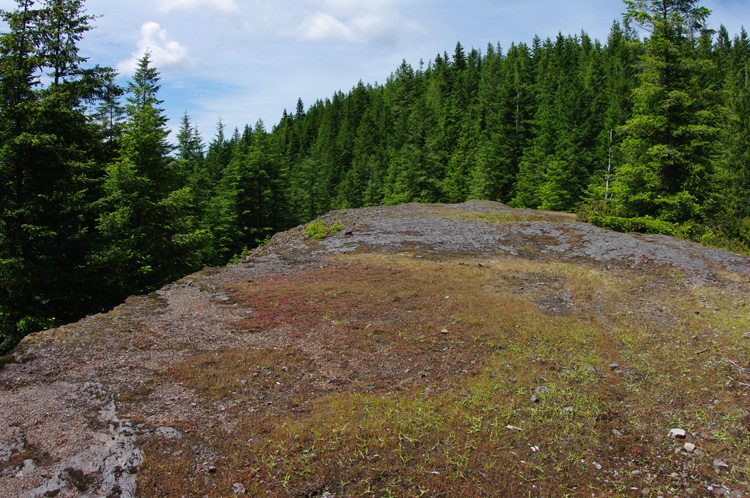
Big spruce cones
The trail to the fen passes through a stand of fairly young spruce with a diverse flora of shade-loving wildflowers; however these are mostly spring bloomers, at their best in late April to May. You may be surprised by the appearance of these spruce trees, for they have much larger cones than we see on our Sitka Spruces at lower elevations, and on some trees the young cones are mahogany-colored rather than the pale tan of the natives. These are Norway Spruces, the result of an experiment to see how well they would grow in our climate and soils. They have persisted and grown, but do not seem to be developing into particularly valuable lumber trees, so I expect they will not be planted much in other Tillamook forests.
